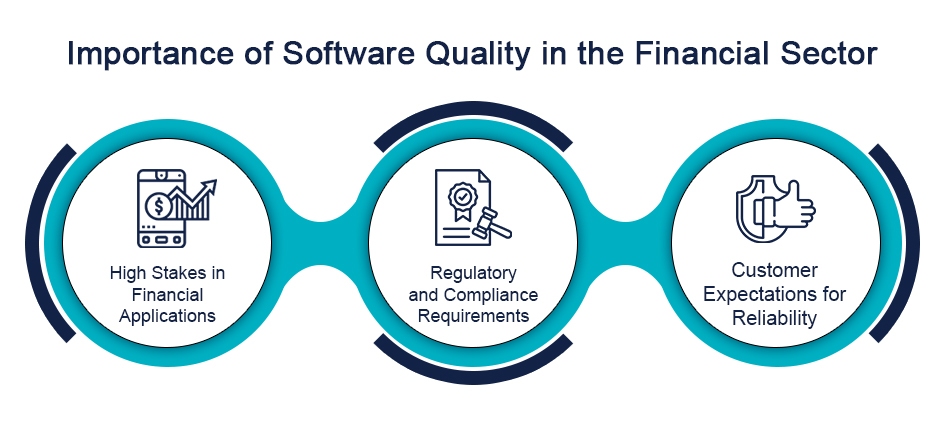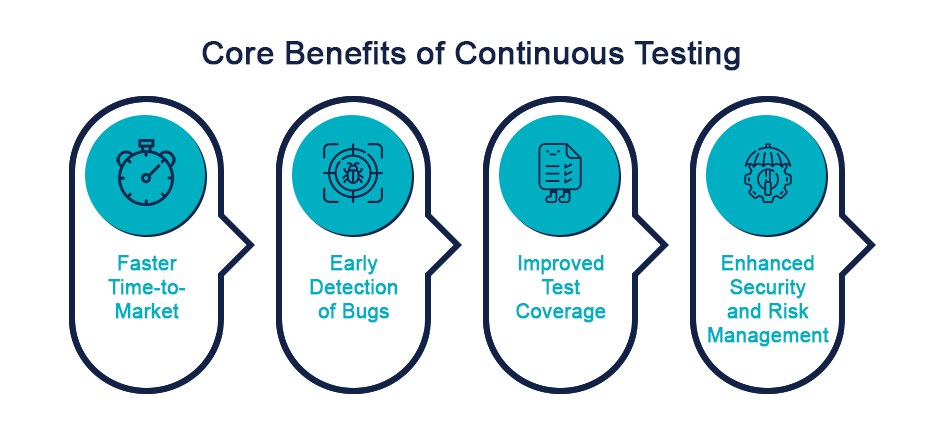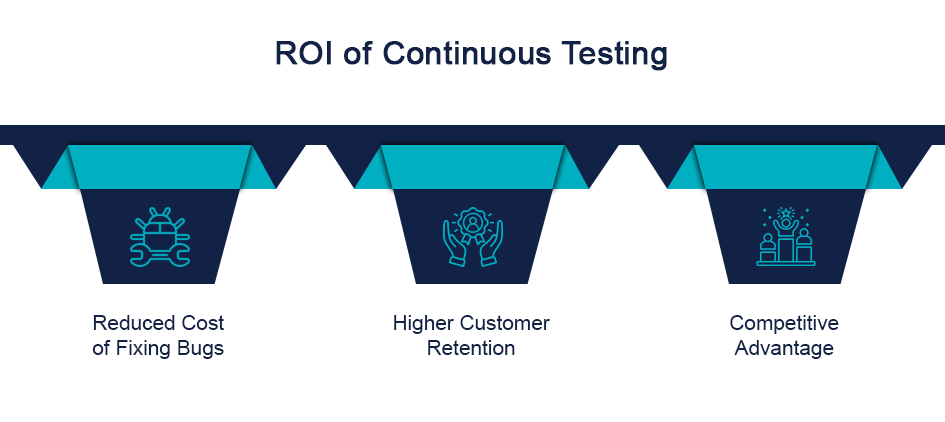
Why Continuous Testing is Critical in Financial Software Development
What is Continuous Testing?
Continuous Testing (CT) is a process where software is tested early, often, and automatically during development to ensure that bugs and issues are caught as soon as they occur. It integrates testing into every stage of the software delivery pipeline rather than treating it as a separate phase at the end. This approach reduces the chances of last-minute failures and ensures better quality code gets into production. CT is especially crucial for fast-paced development environments like DevOps and Agile.
Evolution of Testing in Software Development
Software testing has undergone significant changes over the years. In the past, testing was performed manually and typically only after a product was fully developed. This waterfall model often resulted in delays and meant that bugs were frequently discovered too late in the process. With the introduction of Agile methodologies, the focus shifted towards iterative development and more frequent releases. Now, Continuous Testing helps teams identify issues right after code changes, making releases faster and more reliable.
Difference Between Traditional and Continuous Testing
Traditional testing is reactive, which happens after development is done. Continuous testing is proactive. It occurs during development. Instead of waiting until the end to validate the entire software, CT validates every new line of code as it’s written and integrated. This means faster feedback, quicker bug fixes, and improved developer efficiency.

Importance of Software Quality in the Financial Sector
High Stakes in Financial Applications
Financial software deals with sensitive data and real-time transactions and must maintain accuracy to the paise. A small error can lead to massive financial losses or legal action. Think about a bug that deducts double the amount from a customer’s account—it can shake customer trust overnight. Continuous testing ensures that such issues are prevented before they go live.
Regulatory and Compliance Requirements
The financial sector is heavily regulated. Apps must adhere to standards like GDPR, PCI-DSS, SOX, and more. Compliance isn’t optional—failure to meet it can result in fines and damaged reputations. CT helps integrate compliance checks right into the pipeline. Every update can be tested against regulations automatically.
Customer Expectations for Reliability
Customers expect 24/7 access to their money without hiccups. Users lose confidence if a mobile banking app crashes or a transaction fails. CT helps build a seamless, reliable experience by continuously validating the functionality and performance of software under different conditions.

Core Benefits of Continuous Testing
Faster Time-to-Market
The finance world is hyper-competitive. Whether it’s launching a new payment feature or responding to a regulatory update, speed matters. CT allows teams to deploy changes rapidly without compromising quality. Automated testing reduces the time needed for regression testing and manual QA cycles.
Early Detection of Bugs
Fixing bugs earlier is significantly cheaper. CT helps detect issues as soon as code is written or merged. Developers can fix the problem instantly instead of waiting days or weeks—reducing technical debt.
Improved Test Coverage
With automated Testing and CT, teams can run hundreds or thousands of tests across various platforms, devices, and user scenarios in a fraction of the time it would take manually. This ensures comprehensive coverage—unit, integration, UI, API, and even security tests.
Enhanced Security and Risk Management
Security testing is baked into Continuous Testing pipelines. Tools like Snyk, Fortify, or OWASP ZAP can scan new code instantly. This proactive approach drastically reduces the window of vulnerability and gives confidence that applications are safe from threats.
Continuous Testing in the DevOps Pipeline
 Role in CI/CD Pipelines
Role in CI/CD Pipelines
CI/CD (Continuous Integration/Continuous Delivery) pipelines thrive on automation—CT is their backbone. Every code commit triggers a series of automated tests. Only if the tests pass will the code move to staging or production. This ensures that only stable, tested code gets deployed.
 Automation and Integration Tools
Automation and Integration Tools
CT is powered by tools like:
These tools are integrated to run when developers push changes, allowing instant validation.
 Shift-Left Testing Explained
Shift-Left Testing Explained
“Shift-Left” means testing earlier in the software development cycle. Traditionally, testing was the final phase. In CT, Testing starts right when the code is being written. Developers test locally before the code even hits the shared repository. This saves time, reduces errors, and aligns with Agile principles.
Specific Challenges in Financial Software Testing
Testing for Compliance and Regulation
Testing for compliance means ensuring the software adheres to local and global laws. CT frameworks include test cases for:
All of these can be validated automatically, saving manual effort.
 Security Vulnerabilities
Security Vulnerabilities
Finance apps are a prime target for cyberattacks. Continuous security testing helps discover vulnerabilities like SQL injection, XSS, or insecure APIs early. CT integrates tools that simulate attacks and identify weak points regularly.
 Handling Sensitive Data
Handling Sensitive Data
Real data cannot be used for testing due to privacy risks. CT frameworks employ anonymized or synthetic data that mimics real-world usage without compromising customer privacy. This keeps systems compliant while ensuring tests are realistic.
Tools and Technologies for Continuous Testing
Top Automation Tools Used
 Role of AI in Test Automation
Role of AI in Test Automation
AI helps create smarter, self-healing test scripts. Tools like Testim or Mabl detect failure patterns and adjust test scripts automatically. This reduces test flakiness and maintenance overhead.
 Integration with DevOps Tools
Integration with DevOps Tools
Tools like Jenkins, GitHub Actions, and CircleCI can be configured to trigger tests on each commit, pull request, or merge. Slack or email notifications can alert teams in real time about test results or issues.
Best Practices for Implementing Continuous Testing
 Creating a Testing Culture
Creating a Testing Culture
Testing should be a shared responsibility. Developers, QA, DevOps, and product teams should understand its value. Encourage writing tests early and often.
 Writing Maintainable Automated Tests
Writing Maintainable Automated Tests
Use modular and reusable test scripts. Follow the Page Object Model (POM) for UI automation. Keep test cases short, focused, and easy to understand.
 Monitoring and Reporting Effectively
Monitoring and Reporting Effectively
Use dashboards to visualize results. Allure, ReportPortal, and custom dashboards show pass/fail rates, flaky tests, and trends over time. Regularly review them to spot regressions.
Real-World Examples in FinTech
 Case Study: Bank Application
Case Study: Bank Application
A major bank adopted CT to move from quarterly to weekly releases. Automation cut down QA time by 70%. Bugs in production dropped by over 60%—improving customer satisfaction. A widely used payment gateway utilizes CT to manage thousands of transactions per second. Automated stress tests have enabled them to scale while maintaining 99.999% uptime.
 Case Study: Investment Platform
Case Study: Investment Platform
An investment firm integrated CT with GDPR compliance tools. As a result, they avoided penalties during audits, and their platform maintained a 100% uptime during a volatile market season.
Common Pitfalls and How to Avoid Them
Over-Reliance on Automation
Not everything can be automated, like exploratory Testing or UX validation. Balance is key. Blend automation with manual testing.
Ignoring Non-Functional Testing
CT isn’t just about features. Test for:
Poor Test Data Management
Inadequate or inconsistent test data can cause flaky tests. Use data management strategies:

ROI of Continuous Testing
Reduced Cost of Fixing Bugs
The earlier a bug is found, the cheaper it is to fix. CT reduces bug-fix costs by up to 80%.
Higher Customer Retention
Reliable, smooth experiences lead to loyal customers. Users don’t tolerate crashes or downtime when it comes to their money.
Competitive Advantage
Companies that release faster, safer, and more frequently win customer trust—and market share. CT is your secret weapon.
Future of Continuous Testing in Financial Software
Emerging Trends
By 2030, compliance testing (CT) will be mandatory. With real-time regulatory updates, continuous compliance testing will become the standard, and AI will manage most test design and optimization.
Conclusion
Continuous testing is not a luxury—it’s a necessity in the high-stakes world of financial software. It empowers teams to release faster, safer, and smarter. Whether you’re a fintech startup or an established bank, investing in CT today means fewer fires to fight tomorrow. The bottom line? Test early. Test often. Test smart.
FAQs
How Can Datavision help?
We assist various financial institutions and global banks on their digital transformation journey. Our one-of-a-kind approach, which combines people, process, and technology, expedites the delivery of superior results to our clients and drives excellence. Several reputed companies leverage our proprietary suite of business excellence tools and services to unlock new growth levers and unparalleled ROI.
Datavision stands proudly as a prominent banking software solutions provider, recognized for our unwavering commitment to excellence in the industry. We have earned our esteemed reputation by consistently delivering cutting-edge core banking software, catering to the needs of both retail and corporate banking software sectors. At Datavision, our mission is clear: to provide our clients with the best banking software products, ensuring that they stay ahead in an ever-evolving financial landscape. We take pride in serving our prestigious clients and look forward to continuing our journey of innovation and excellence.
Our portfolio of banking software product and services include:
Core Banking Solutions: | FinNext Core | Banking: | FinTrade | EasyLoan | MicroFin |
Digital Banking Solutions: | IBanc | MobiBanc | MBranch | FinTab | FinSight |
Risk & Compliance: |FinTrust |
Want to know how our team of experts at Datavision provides customizable, scalable, and cost-effective banking software products and solutions to our esteemed clients? Visit us for more information.